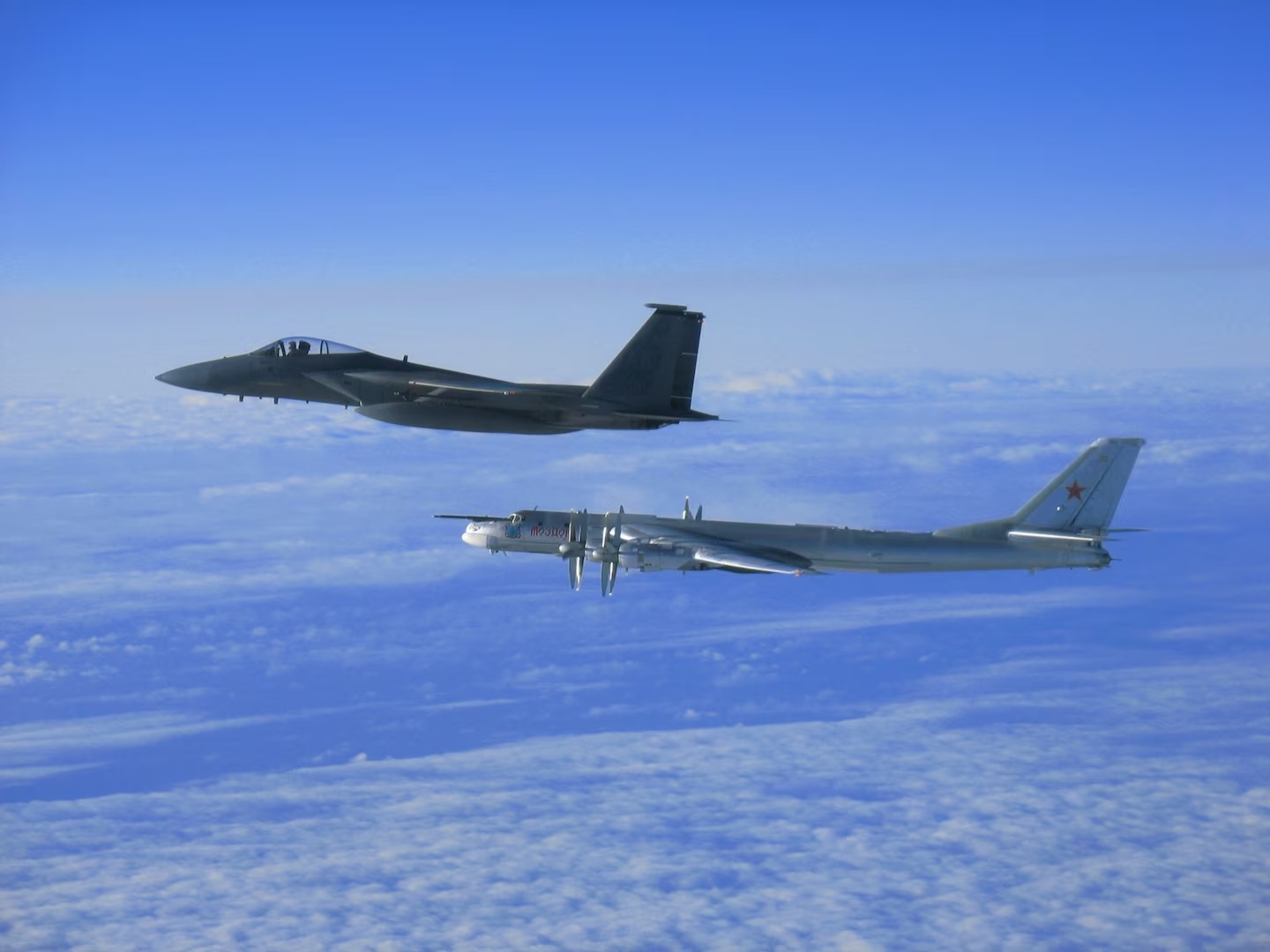The North American Aerospace Defense Command (NORAD) has announced that it detected and tracked four Russian military aircraft operating in the Alaska Air Defense Identification Zone (ADIZ) late on August 13 and into the early morning hours of August 14.
Russia Scrambles MiG-29 Fighter Jet To Thwarts P-8 Poseidon Violating Its Border Over Barents Sea – RuMoD
On the very same day, Russian bombers also made their presence felt near NATO airspace in Europe. This prompted two NATO member countries to swiftly deploy their fighter aircraft to intercept the approaching Russian military planes.
The latest incident near Alaska took place nearly two weeks after a group of Russian and Chinese warships participated in collaborative drills near the Aleutian Islands and were closely monitored by the US Navy.
As stated in a press release by NORAD, the Russian aircraft operated within international airspace and refrained from entering the sovereign airspace of either the United States or Canada.
NORAD said that this type of Russian activity within the Alaska Air Defense Identification Zone (ADIZ) occurs regularly and is not perceived as a direct threat.
— North American Aerospace Defense Command (@NORADCommand) August 14, 2023
The command explained that an ADIZ begins where a country’s sovereign airspace concludes, encompassing a specific segment of international airspace. The objective of this designation is to ensure the immediate identification of all aircraft to uphold national security interests.
NORAD stated that it utilizes a comprehensive defense network composed of satellites, ground-based and airborne radars, as well as fighter aircraft, forming a multi-layered system.
Although NORAD confirmed that it “detected and tracked” the Russian aircraft, the command did not specify whether American or Canadian aircraft were mobilized in response, a course of action that has been undertaken in previous instances. The NORAD, however, does comprise US and Canadian jets.
Additionally, NORAD did not disclose the specific Russian aircraft types that were involved in the operation.

Routine flights conducted by Russia in this region are a recurring pattern, with the most recent publicly announced occurrence taking place on July 3, involving four Russian aircraft.
Responding to these developments, Pentagon Press Secretary Air Force Brig. Gen. Patrick S. Ryder stated on August 14 that such flights of this nature are not unusual, implying that they fall within a pattern of activity observed in the past.
British And Dutch Jets Deployed To Intercept Russian Bombers
On August 14, in a separate development, two NATO member nations activated fighter aircraft in response to Russian bomber flights near their respective territories.
On that day, two Royal Air Force Typhoons, maintained in a state of quick reaction readiness at RAF Lossiemouth, were dispatched to intercept two identified aircraft: a Tu-142 Bear-F and a Tu-142 Bear-J maritime patrol aircraft.
These Russian military aircraft, known for their roles in reconnaissance and anti-submarine warfare, were observed flying north of the Shetland Islands, which constitute the northernmost part of the United Kingdom.
Historic Military Pact Between Australia And Japan Comes Into Force To Counter-Balance China
The Royal Air Force also noted that such occurrences are not rare. However, they emphasized that the presence of Russian planes can potentially create hazards for other aircraft operating in the vicinity.
The RAF further disclosed that Russian military aircraft often do not engage with air traffic control or employ the “squawk” procedure, which involves broadcasting a specific code to ensure their visibility to both other airborne users and ground-based air traffic controllers.
The @RoyalAirForce intercepted two Russian Tu-142 long-range maritime patrol bombers this morning, north of Scotland.
The quick reaction alert Typhoon jets were supported by a Voyager tanker and have now returned to @RAFLossiemouth.
Read more ➡️ https://t.co/hBig110t0L pic.twitter.com/3550tdpXAx
— Ministry of Defence 🇬🇧 (@DefenceHQ) August 14, 2023
“A Voyager tanker was also scrambled and remained airborne for the duration of the mission to offer air-to-air refueling, ensuring the Typhoons could remain in the air for the extended period necessary to complete their mission,” the RAF said.
The service added that RAF Typhoons are swiftly activated to protect and preserve the United Kingdom’s airspace.
Notably, RAF pilots stationed at Lossiemouth have recently concluded a four-month deployment overseeing NATO’s air policing mission in Estonia, during which they conducted over 50 similar air intercept operations.
In a related development, the Danish Air Force aircraft also engaged with two Russian bombers on the morning of August 14, which appeared to involve the same Russian aircraft, as revealed by the Netherlands.
The two Dutch F-16s were promptly dispatched from Volkel Air Base as the Russian aircraft appeared to be heading toward Dutch airspace. However, the Russian aircraft altered its course, prompting the Dutch F-16s to stand down.
The Dutch Ministry of Defense underlined, “This does not happen often, but today’s incident does demonstrate the importance of rapid employability.” These occurrences have unfolded against the backdrop of Russia’s ongoing invasion of Ukraine.
- Contact the author at ashishmichel(at)gmail.com
- Follow EurAsian Times on Google News